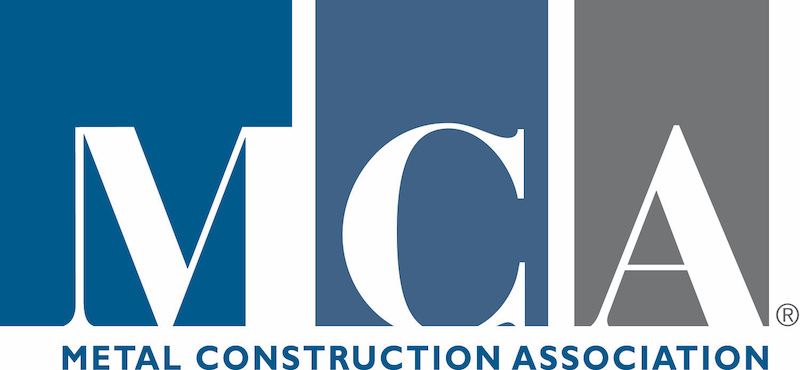Metal Roofing
What are Low Slope Metal Roofs?
Low Slope Metal Roofs provide years of low cost, low maintenance performance. Low Slope Metal Roofs have been a preferred roof covering for commercial, institutional and industrial buildings for years because of their ability to protect against the elements, to allow water to drain away from the roof surface, and to keep building contents and occupants dry and comfortable.
SERVICE LIFE, LOW MAINTENANCE
Recently, building owners and architects have come to recognize and appreciate still other attributes of Low Slope Metal Roofs – their long service life, low life cycle cost, sustainability, recyclability, low maintenance requirements, light weight and resistance to wind.
Low slope structural roofing, generally used on roof pitches ranging from ¼:12 to 3:12, consists of interlocking panels, commonly called standing seam roofing, that run vertically along the roof surface. These panels generally come with a painted mill finish or a clear acrylic finish. Some metal roofing used on low slope applications requires machine seaming during installation to ensure a watertight seal. A seaming apparatus is simply rolled along the panels to crimp the panel seams together.
BETTER RESISTS WIND & THE ELEMENTS
A standing seam design assures adequate draining from rain and snow, effectively eliminating ponding, leaks and related problems typically associated with built-up roofs. In retrofit projects, a sub-framing system is attached to the existing flat roof surface to provide a minimum ¼:12 roof pitch.
Moreover, Low Slope Metal Roofs are not prone to the degradation experienced by organic materials, enabling these roofs to better resist the elements. This, in turn, results in a longer life span and a very low annual operating cost.
Benefits of Low Slope Metal Roofs
Study Substantiates Low Life Cycle Cost
As a result of the durability and reliability of these systems, low slope metal roof manufacturers offer 20- to 40-year warranties on their products. Their long life and low maintenance requirements also put metal roofs on a very attractive life cycle cost track.
This was confirmed in a 2005 study of low slope roofing conducted by Ducker International. Respondents to the study said they expected the life cycle cost of a metal roof, including outlays for maintenance, to be about 30 cents a square foot per year, far less than their expectations for built-up and single-ply roofs, at 37 cents and 57 cents, respectively.
Metal roofs also have a significantly longer expected service life than either built-up roofing or single-ply roofs. Study participants said they expect metal roofs to last 40 years – 17 years longer than built-up and 20 years longer than single-ply systems.
Not only can low slope metal roofing contribute to the bottom line, it can also contribute to LEED credits, which are awarded to buildings that use high recycled content and other “green” construction materials. A typical low slope metal roof has at least 25% recycled content, and at the end of its long useful life is 100% recyclable.
In addition, “cool metal roofing” can significantly reduce a building’s long term energy use. With heat deflecting metal coatings, energy costs can be reduced up to 40% or more, according to a study conducted by Oak Ridge National Laboratory.
Metal Roofs Place Fewer Demands on Structure
Typically, low slope metal roof systems vary in weight from 40 to 135 pounds per 100 square feet, making them among the lightest roofing products and the easiest to install. A lightweight roofing system also places fewer demands on a building’s structural support system, an important consideration in earthquake-prone areas.
Unlike non-metal systems which require an underlying substrate or deck, low slope metal roofs can be applied directly over bar joists or purlins. And, because of their interlocking or active fastening systems, metal roof panels are designed to meet the requirements of ASTM E1592, UL 580, UL1897 and other severe wind and uplift tests.
Metal roofing products come in a variety of materials as well as many colors, textures and profiles. To ensure longer life, almost all low slope roof materials are protected from the elements by high performance, highly durable metallic coatings.
While the idea of protecting a building with metal originated centuries ago, the concept is still valid today. Whether the goal is many years of low-cost, low maintenance, problem-free performance, or an environmentally responsible approach to roofing, low slope metal roofs make sense.

